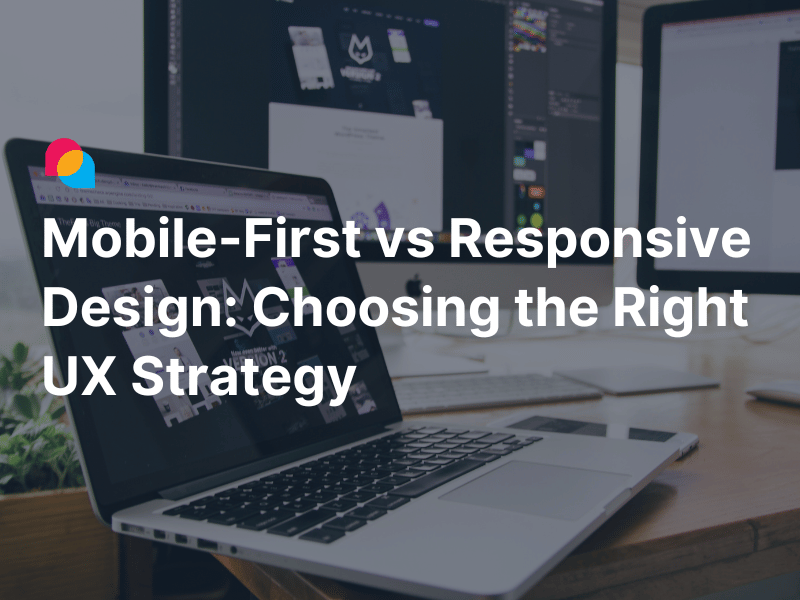Why This Debate Feels So Real Right Now
You know that moment when we push an app live, only to realize most people drop off before they even tap “Install”? Then, someone else shares a link; and, instantly usable, no fuss, no frustration. We’ve all been hit by that contrast.
This isn’t just about code; it’s about how fast we can bring an idea to life and reach people without gatekeeper responses slowing us down. With ad costs climbing and app stores feeling crowded and rigid, the conversation around progressive web apps vs native apps hits home harder than ever. We keep asking ourselves: where should we invest to deliver value that sticks; not just features that vanish into downloads?
What Exactly Are We Comparing?
Let’s get comfy with the basics:
- PWAs(Progressive Web Apps) are like ordinary websites that leveled up. Service workers let them cache things offline; a web manifest makes them installable; and they grow progressively smarter depending on what the device can do.
- Native apps are siblings of the OS; built with official toolsets like Swift or Java, compiled into real apps that live in app stores, with tight hooks into hardware and system functions.
We’re evaluating them through five real-world lenses:
- What features they can deliver,
- How many users they can reach,
- How quickly we can build and iterate,
- What it costs to support them long-term,
- The actual business outcomes; how users engage, converts, and keep coming back.
When Real Data Matters
We love stories; hard numbers make them stick.
- Starbucks found that their PWA; born out of necessity in low-bandwidth areas; brought double the daily active usage and boosted mobile orders by around 65%. That’s not hypothetical; that’s proof people stayed around when friction vanished.
- Pinterest, working to improve their mobile web, uncovered that their PWA delivered 60% more engagement. That’s right; tap, stick, browse, buy.
- A broader view from analytics teams shows that PWAs often deliver 30–40% higher conversion versus mobile web placeholders that weren’t installable or re-engageable.
On the flip side, a 2025 academic survey charted that, in contexts like fintech or gaming, native apps still outperform PWAs on speed, offline reliability, and performance; though PWAs came out ahead on initial deployment speed and cost efficiency.
And then, dev-focused analysis of resource usage drilled the point home: native builds burned less CPU, consumed less battery, and used less memory than their PWA counterparts; especially under heavy load or visuals-on-demand.
A quick anecdote: a retail team we know found that their native app produced 2.6× more conversions than the PWA, especially for users who already clicked “Install” and came in with intent.
Let’s Map the Difference
Instead of paragraphs, here’s something we sketch on the whiteboard:
|
What Matters |
PWAs (Web-Powered Apps) |
Native Apps |
|
First access |
Instant; just tap a link |
Requires install, store search, delay |
|
Feeling & performance |
Good; but needs effort to feel seamless |
Butter-smooth thanks to OS-specific tuning |
|
Hardware access |
Slowly growing (thanks, Project Fugu!) |
Full sensors, file access, offline sync |
|
Discovery |
Direct links, SEO, shareable |
Store rankings, reviews-based discoverability |
|
Updates |
Push live immediately |
Store review cycles add friction |
|
Cost & maintenance |
One codebase keeps things simple |
Two stacks mean two paths to maintain |
|
Revenue control |
We control checkout and flows |
Stores push subscriptions; they also take 30% |
|
Efficiency |
Browser overhead still bites us |
Leaner, though harder to optimize |
|
Long-term engagement |
Easier to tweak, iterate, test |
Deeper hooks, but heavier to pivot quickly |
How We Talk About This as a Team
We don’t rail on “AI”. We do talk about being smarter with our time. We say things like:
“When we spun up the PWA version of our browse experience, our session time increased; and we didn’t have to build identical iOS and Android versions.”
That “we” matters. It means we’ve been in the trenches, bullish on quick wins but cautious about compromises. That’s the authentic tone we're going for.
Security, Privacy & Governance
This is where the conversation usually gets serious; especially when you're building for fintech, healthcare, or anything handling personal data.
With native apps, we're playing with a full set of security tools baked into the platform: encrypted local storage, biometric authentication, secure keychains, and sandboxed permissions. They're closer to the metal; and that’s an advantage when compliance is a must.
PWAs have come a long way too. Service workers are restricted to HTTPS by default. We now have access to secure credential storage (via ‘Credential Management API’) and strong TLS standards. But the threat model shifts: instead of worrying about device-level exploits, web-based apps deal more with XSS, CSRF, and content spoofing. It’s a different game, and one we need to prepare for carefully.
One governance challenge that keeps surfacing: auditing and compliance. For regulated industries, native apps; by virtue of tighter integration and enterprise support like Mobile Device Management (MDM); still offer more control. That said, PWAs that work in a browser can often avoid some of the jurisdictional headaches that come with app store data policies. It really depends on what kind of business you're in.
Accessibility, Global Reach & Resilience
Let’s be real; global audiences don’t all have iPhone 15 Pros and 5G.
This is where PWAs genuinely shine. Out of the box, they lean on semantic HTML, which means screen readers, keyboard navigation, and accessibility standards work without us jumping through too many hoops. Combine that with lazy loading, responsive images, and streamlined bundles, and you’ve got something that runs on $100 Androids over slow 3G networks.
Native apps can be accessible, but they often need explicit a11y work per platform. That takes effort, and teams often miss it if they’re rushed. Internationalization (i18n) is also more straightforward on the web with continuous deployment, content ops workflows, and built-in translation libraries.
We've seen this in practice. A logistics client targeting Southeast Asia shifted their lightweight job-tracking interface from native to a web-first PWA; cutting data usage by nearly 60% and improving usage among low-end devices by over 35%.
This isn’t theory. It’s something teams are deploying now.
Case Studies & Product Archetypes
Let’s skip the hype and get into real product types.
E-commerce and content-heavy media: PWAs often dominate here. Lower bounce rates. Faster page loads. And users don’t need to commit to a download just to browse. Flipkart, Trivago, and Twitter Lite all fall into this category; and they've shown massive engagement improvements.
Fintech and healthcare: Native apps still win here. Why? Trust, performance, and compliance. If a banking app glitches during a transaction; or doesn’t feel “secure enough”; you’ve lost the user. In these industries, seamless biometrics, encrypted storage, and background data sync matter.
Field service & logistics: It’s a toss-up. PWAs win on fast iterations and offline support for checklists and location logging. But if workers need barcode scanning, Bluetooth sensors, or ruggedized support, native still holds its ground.
SaaS & productivity: This one’s close. If you want parity across desktop and mobile with shared logic, PWAs (or hybrid Electron + PWA) setups can carry you far. But if you’re optimizing for gestures, local file handling, or split-screen multitasking, native wins out.
A Decision-Making Scorecard
Rather than endless debates, we’ve found it more useful to run a weighted scorecard for each project. Here’s a simplified one we often sketch during kickoff:
|
Category |
Weight (1–5) |
PWA Score (1–5) |
Native Score (1–5) |
|
Feature Complexity |
4 |
3 |
5 |
|
Device Access |
5 |
2 |
5 |
|
Speed to Market |
3 |
5 |
3 |
|
Team Skill Alignment |
4 |
4 |
3 |
|
Cost Constraints |
5 |
5 |
2 |
|
Compliance Requirements |
3 |
2 |
5 |
|
Global Network Reliability |
4 |
5 |
3 |
|
Total |
– |
88 |
94 |
(Just an example; your own weights and needs will vary.)
We usually run this for 2–3 product ideas. Sometimes it pushes us clearly one way. Other times, it reveals room for a hybrid roadmap.
The Road Ahead: What's Changing
The line between native and web is getting blurrier by the month.
Project Fugu is bringing more native features to the web; think local font access, clipboard APIs, and file system controls. WebAssembly is letting us do things we used to only dream of in browsers; like running compiled code for 3D or analytics.
On the other side, native tooling is getting better at cross-platform. Flutter, React Native, and KMM (Kotlin Multiplatform Mobile) are all helping developers bridge iOS and Android without doubling the workload.
And let’s not forget the elephant in the room: AI-assisted development. We're seeing AI help teams prototype features, generate test suites, and localize content at scale. That speeds up both PWA and native paths. But we still need the judgment to choose the right architecture.
Executive Takeaways: Where PWAs Win, Where Native Stays Essential
Let’s wrap with the simplest framing we know:
✅ Choose PWAs when:
- You need to launch fast, iterate quickly
- The use case is lightweight, transactional, or browse-heavy
- SEO, link sharing, and cross-device compatibility matter
- Your team is web-first and cost-sensitive
✅ Stick to Native when:
- You need deep hardware access or tight platform integration
- Performance is non-negotiable
- You're in regulated industries with strict compliance needs
- You’re optimizing for high retention, push, or monetization
✅ Or go hybrid:
Start web, validate with users, then consider layering in native. Or use bridging tech like Trusted Web Activities inside Android to deploy your PWA within a store.
Closing Thoughts
We don’t need to pick sides forever. What we need is clarity; about our users, our goals, and our constraints. The web is growing stronger. Native is still powerful. Our job is to use both wisely.
Start with what matters. Build small. Test fast. And commit when it works.
References:
Progressive Web Apps (PWAs) vs. Native Mobile Apps: Which Is Best for Your Mobile Strategy?, GO-Globe





